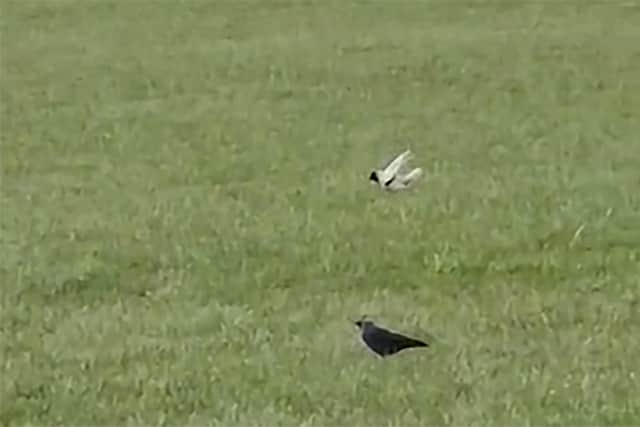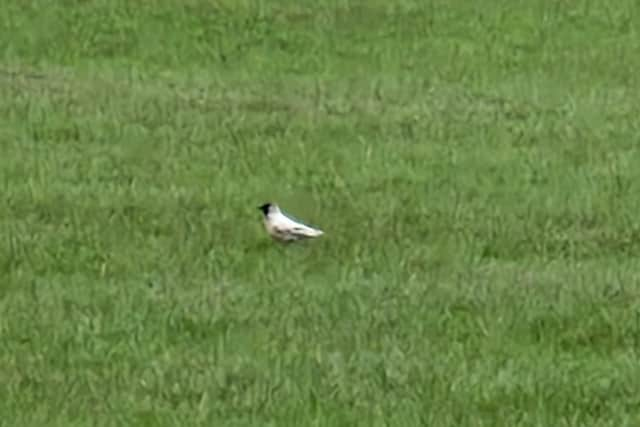Sightings of a white crow are ruffling feathers in the Co Down countryside
and live on Freeview channel 276
The well-known Ulster phrase about an argumentative person has taken on new meaning for folk around the Banbridge area who have been regularly seeing a crow which is indeed white.
The unusual feathered friend has been causing a bit of a stir in a rural area just outside the town where it seems to be living quite happily among its normal colleagues but, according to The Royal Society for the Protection of Birds (RSPB), it is not likely to be an albino individual.
Advertisement
Hide AdAdvertisement
Hide AdThe News Letter managed to get a few photos of the somewhat shy bird and after contacting the RSPB a spokesperson said the bird was in fact a Jackdaw.


"We do believe it is a Jackdaw and potentially one with plumage abnormality such as leucism or even progressive greying,” said the spokesperson.
According to the RSPB ‘leucism’ is often used as an umbrella term to refer to a number of different plumage abnormalities.
True leucism is a genetic condition where there is a lack of melanin pigment in the feathers and skin, which can result in patches of white feathers which are usually symmetrical or overall white plumage.
Advertisement
Hide AdAdvertisement
Hide AdLeucistic birds retain their normal dark eyes while albino birds have pink eyes.


But, according to the RSPB, it’s difficult to tell the exact cause of the whiteness on the Banbridge bird.
"It's difficult to tell leucism or progressive greying apart without knowing the history of the bird or observing it for several moults,” said the spokesperson.
"The white patches on birds with progressive greying will increase over time, whereas white caused by leucism will remain the same throughout the years.
Advertisement
Hide AdAdvertisement
Hide Ad“If it is leucism, this is commonly seen and can impact a variety of species as opposed to albino birds which is extremely rare.”
The RSPB said progressive greying was not heritable and was a condition which was identified when the bird has white patches that are distributed randomly over the body due to the loss of melanin pigment over time.
"More white feathers are typically seen with each feather moult, but the feather structure remains unaffected,” said the spokesperson.
But, while this white individual seems happy and healthy it may struggle to become a love bird and even if he/she does find a mate the distinctive white feathers could be passed on.
Advertisement
Hide AdAdvertisement
Hide Ad"There is some evidence which shows that leucistic birds may occasionally not be recognised or accepted by a potential mate,” said the RSPB spokesperson.
“True leucism is inherited, but offspring won’t necessarily be white as it can skip generations.
"The extent and positioning of white feathers can also vary between adults and young.”
And there is more bad news for the bird as the RSPB explained: “Leucistic birds can fare well in the wild.
"However, as they are usually more conspicuous, this can increase risk of predation.
"As the reduction of pigment causes feathers to weaken and be more prone to wear, this can also hinder flight.”
Comment Guidelines
National World encourages reader discussion on our stories. User feedback, insights and back-and-forth exchanges add a rich layer of context to reporting. Please review our Community Guidelines before commenting.